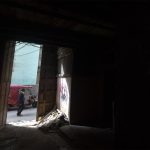Interest rate in Mexico
clearly the Federal Reserve interest rate hike it’s a challenge for business, and people in the US are beginning to worry about their safety and jobs. Now we see a drop in the demand for goods, as well as lower spending, Marcelli said.
The investment office of UBS pointed out that the beginning of the increase in the interest rate of the Federal Reserve has led to the creation of four scenarios for global investments and the global economy in the following months:
1. Stagflation
S&P 500: 3,300 points.
10-year US bond: 4%
Chance: 20%
UBS points out that in the face of fears of stagflation (high inflation and economic stagnation) it is advisable to search for liquid assets to meet cash flow needs for the next 3 to 5 years.
2. Reflation (marginal recession)
S&P 500: 4,500 points.
10-year US bond: 3%.
Chance: 10%.
In this scenario, lower corporate earnings expectations would weaken stocks going forward, which is why greater exposure to higher quality income stocks, healthcare or the Swiss franc is suggested.
“Capital protected strategies can also allow investors to use volatility to work in their favor and mitigate potential downside risks,” notes UBS.
3. Soft landing
S&P 500: 3,900 points.
10-year US bond: 3.25%.
Chance: 40%.
In this scenario, investors would be more confident in corporate earnings, especially energy, financial and UK-traded stocks.
UBS points out that sectors related to food and data security, as well as some government bonds, would also represent a good alternative: “We think this will stimulate demand for zero carbon, cybersecurity and agricultural yield solutions.
4. Fall
S&P 500: 3,300 points.
10-year US bond: 1.5%.
Chance: 30%.
In the face of a fall in the global economy, a “massive sale” is considered to create long-term positions and wait for a quick recovery.
The Swiss bank adds that equities following market declines have been associated with strong returns.















